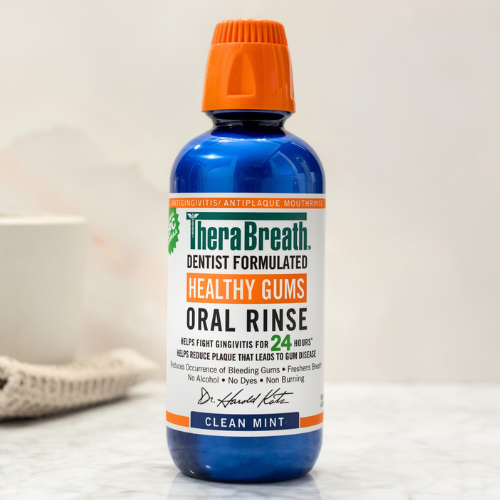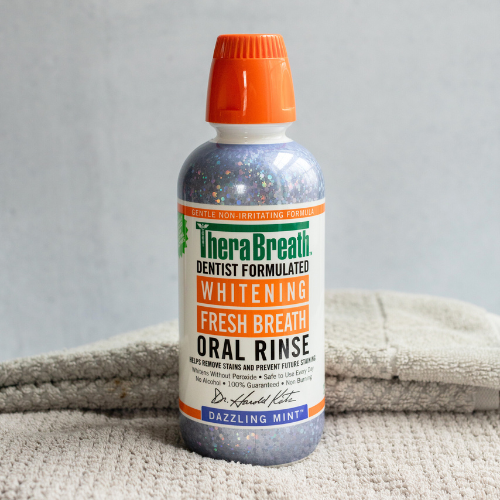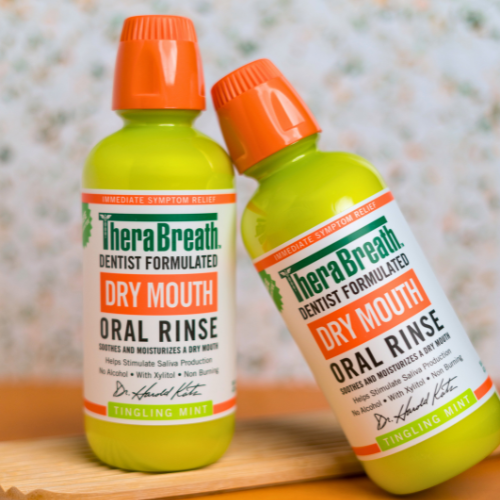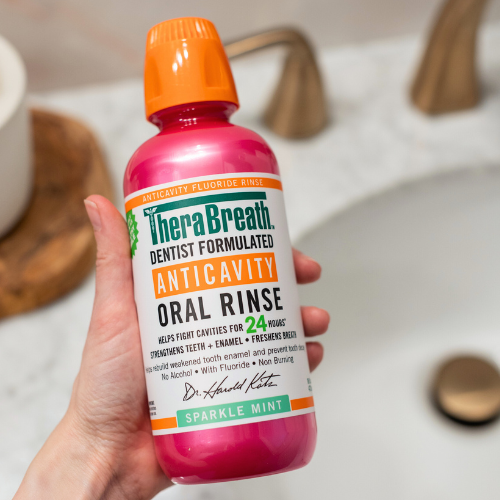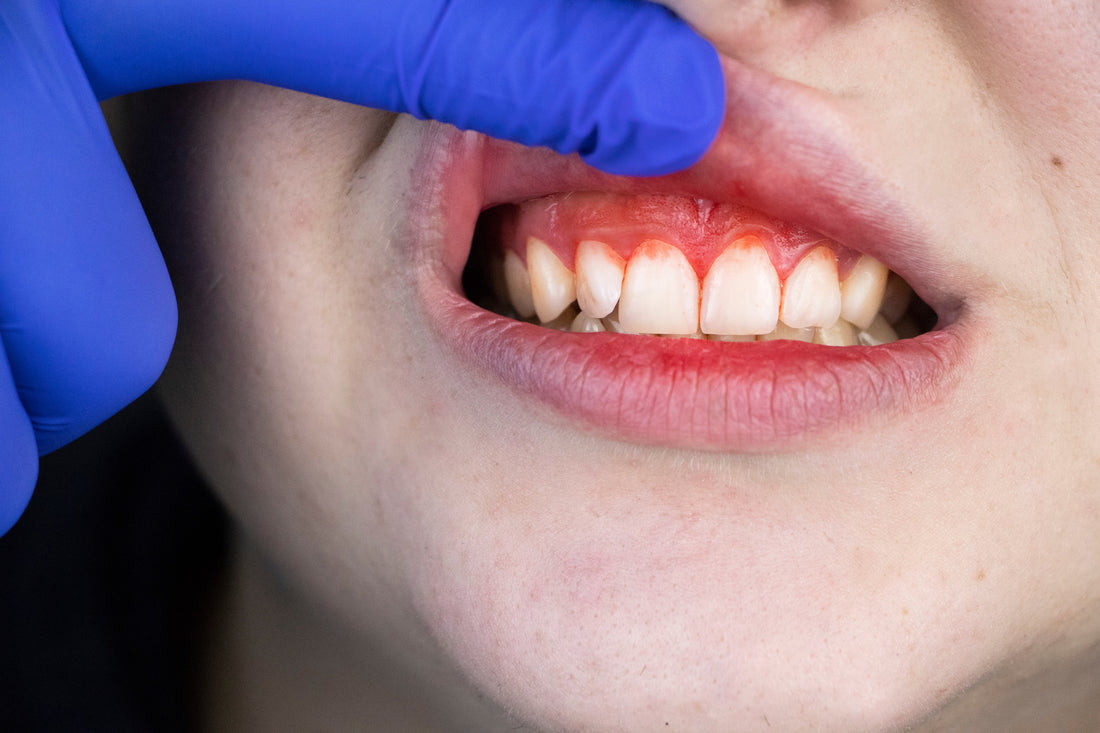
How to Get Rid of Gingivitis
Share
Bad breath (halitosis) is not always caused by gingivitis, however, gum disease can be a contributing factor. This is especially the case when bad breath is chronic and a patient has a history of poor dental hygiene. Gingivitis is a periodontal disease that is an inflammatory response to bacterial buildup (plaque) on the teeth. Gingivitis is characterized by swollen, tender gums that may be bright red or purple. Although gingivitis is not destructive itself, if left untreated it may progress to periodontitis, which can lead to tooth loss.
Bad Breath and Gingivitis
About 25% of the population is impacted by chronic bad breath. Typically, bad breath is caused by gases produced by naturally occurring bacteria in the mouth. Bacteria builds up from a number of sources such as food particles in the mouth, post-nasal drip, and dead epithelial cells. The back part of the tongue and crevasses in the teeth are relatively dry and difficult to clean, enabling bacteria to flourish. As the bacteria break down particles, especially in anaerobic conditions, they produce a number of odorous gases such as volatile sulfur compounds (VSCs). VSCs emit indole, skatole, and polyamines, which results in halitosis.
Causes of Gingivitis
A history of poor dental hygiene related to chewing or smoking tobacco, brushing and flossing teeth inadequately, and avoiding dental checkups allows odor-causing bacteria to flourish. After a period, this can lead to gingivitis. Hormonal changes during pregnancy can cause more plaque buildup and irritated gums, so pregnant women need to pay close attention to oral health. While teeth grinding doesn’t cause gingivitis, it exacerbates existing cases and can lead to more serious gum disease.
Gingivitis Diagnosis

It is important gums are inspected for signs of gingivitis because this may be a root cause of bad breath. In order to diagnose gingivitis, a dentist or dental hygienist will check the gums for signs of sensitivity, bleeding, swelling, as well as significant plaque buildup between teeth and at the gum lines. Periodontal probing instruments and x-rays may be used to determine the extent of gum disease.
Gingivitis Prevention
The first step in preventing gingivitis and associated bad breath is maintaining good oral hygiene. Brushing teeth and flossing daily helps decrease bacteria residing in the mouth, thereby reducing daily halitosis. It also reduces the amount of plaque buildup and strengthens the teeth and gums. Tobacco products and alcohol reduce the amount of saliva in the mouth, thereby resulting in bad breath and potential problems with gums and teeth. If you already have gingivitis, make an appointment with your dentist to prevent it from worsening. To help prevent plaque buildup from progressing to gingivitis, these simple tips can help.
- Brush with a soft brush two times a day minimum
- Floss at least twice a day
- Quit using tobacco products
- Limit alcohol consumption
- Limit dietary sugar (candy, sweets, and sugary drinks)
- Visit a dentist every 6 months for regular check ups
Consequences of Untreated Gingivitis
If gingivitis is not properly treated, several complications can magnify the severity of the disease and lead to other ailments. In addition to halitosis, severe gingivitis can lead to tooth decay, tooth loss, infection and abscess of the jaw bone or gingiva, bacterial infections of the gums and mouth, and swollen glands. Each of these can also exacerbate halitosis without proper treatment. Periodontitis is a possible consequence of untreated gingivitis, which entails the progressive loss of the alveolar bone around the teeth.
Gingivitis Treatment
Fortunately, gingivitis and associated bad breath can be treated by dental professionals. Controlling bacteria and plaque buildup not only can eliminate halitosis, but can also reverse the gum irritation that causes gingivitis. Frequent dental visits and preventive steps such as brushing, flossing, and using oral rinses are effective ways to treat gingivitis and bad breath. When irritation is eliminated, the gums no longer bleed, which prevents added fuel for odor-causing bacteria.
Effective treatments for controlling more advanced cases of gingivitis and preventing periodontitis include curettage, root planing, scaling, and periodontal surgery.
TheraBreath products are highly effective at fighting bad breath and several of our specialty products are targeted specifically at improving gum health. Cetylpyridinium Chloride (CPC) is an FDA approved broad spectrum antibiotic and antibacterial agent. CPC is very effective against plaque and gingivitis and helps guard against gum disease and halitosis.
TheraBreath Healthy Gums Oral Rinse: This powerful rinse now contains CPC, which is especially helpful for people with red, puffy, and bleeding gums. Regular use of this alcohol- and saccharin-free rinse reverses gingivitis, stops bleeding gums, and keeps gums healthy.
In extreme cases, oral surgery may be required to resolve gingivitis. Knowing the warning signs and taking proper care of your teeth and gums can prevent more serious gum disease.
Please Note: The material on this site is provided for informational purposes only. Always consult your health care professional before beginning any new therapy.

